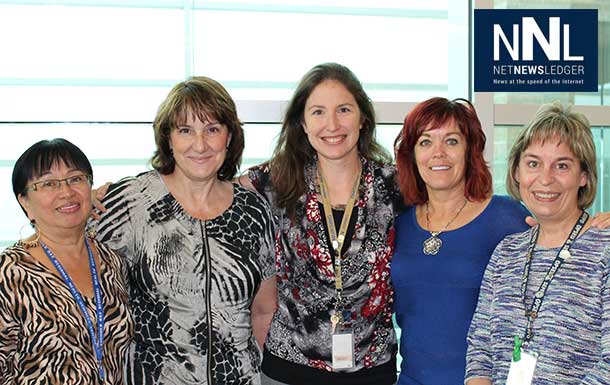

Thunder Bay Team Makes Mental Health Transition Better
THUNDER BAY – Health – Making the transition from hospital to community can be especially challenging for many patients living with mental illness. In the first days and weeks following discharge, these patients are at a particularly high risk of suicide or readmission.
To ensure people move successfully, and in a timely manner, from hospital care to community supports, the Council of Academic Hospitals (CAHO) is currently implementing the Transitional Discharge Model (TDM) in nine member hospitals, including Thunder Bay Regional Health Sciences Centre (TBRHSC).
The TDM is based on facilitating therapeutic relationships to support patients during discharge and community reintegration. One of the model’s main components is support from hospital staff, who will continue to have contact with a discharged client until he or she has established or re-established a therapeutic relationship with a community mental health provider. TBRHSC has put together a bridging team which includes a recreation therapist, social worker, psychologist, and nurses.
“Mental health patients often sit in a void, waiting to be connected and not infrequently are they readmitted to the hospital,” says Dr. Peter Voros, Program Director, Adult and Forensic Mental Health Program. “This new model of care allows staff to stay connected to individuals upon discharge until they get connected to services in order to prevent readmission.”
The other component of TDM is peer support from a person who has experienced a mental illness and is living successfully in the community. People Advocating for Change through Empowerment (PACE) is a local mental health consumer/survivor organization run for and, by consumers. PACE will provide these peer support volunteers, trained through the Ontario Peer Development Initiative. The volunteers support and learn from each other through the sharing of experiences.
“Peer support teaches the consumers how to establish healthy relationships amongst themselves and then with others,” says Nadia Bottoset, TBRHSC’s Site Lead for the TDM Project. “Peers can be positive role models in decision-making and participation, but the most important role is that of an equal. The key to this model is that it recognizes people heal better and stay well longer when they are in healthy, therapeutic relationships. It’s about making healthy relationships while in hospital, as well as keeping them when the patient is discharged.”
Planning for the discharge of individuals living with mental illness is something the Adult Mental Health staff at TBRHSC were already doing, especially for those going to a shelter or no fixed address. They would do their best to make sure that no one left without some plans in place and assistance regarding finances, medication cards, food and affordable housing, says Bottoset. “In the past there wasn’t always necessarily follow-up contact with a patient after discharge, apart from the patient’s psychiatrist. With this model, the bridging team will not leave a client alone until they feel comfortable that another therapeutic relationship has been established.”
Based on its implementation at various sites in Ontario, the United Kingdom and Scotland between 1992 and 2005, it is expected that implementing the Transitional Discharge Model will result in improved quality of patient care, increased communication and collaboration among hospital staff and community support groups and reduced readmission rates, Emergency Department use, length of stay, and hospital costs.
“This model of care fits in well with our Patient and Family Centered Care model by putting the patients first,” says Dr. Voros.
“One of the immense advantages of being an academic health sciences centre and participating in research studies like the TDM Project is the benefit to our patients by being able to offer groundbreaking approaches to care.”







